Karachi – 500 Quarters, Musharraf Colony, Hawkesbay
Audio Stories
Barkat Ali Jamali – Muhammad Hayat Junejo, Shikarpur, Sindh
Originally from Shikarpur, Barkat Ali Jamali is a 40-year-old survivor of the Super Floods of 2010. When the floods hit his village, he didn't get a chance to salvage any of his belongings and could barely manage an escape route for himself and his family. He reached Karachi after spending almost a week living on the road, exposed to the harsh weather, with his children, until government institutions rescued them and relocated them to this makeshift settlement. He has been living here happily ever since.
Zulfiqar Ali Khosa – Qambar Shahdadkot, Sindh
Zulfiqar Ali Khosa is a 52-year-old survivor of the Super Floods of 2010, hailing from Qambar Shahdadkot, Sindh. He and his family were rescued by the government and transported via train to Karachi, as all the roads were submerged in water. The town was once again hit by floods in 2022 and remains highly susceptible to climatic events. Zulfiqar is still haunted by the trauma of witnessing those devastating floods and leaving behind everything. He is apprehensive about returning to his hometown.
Photo Stories
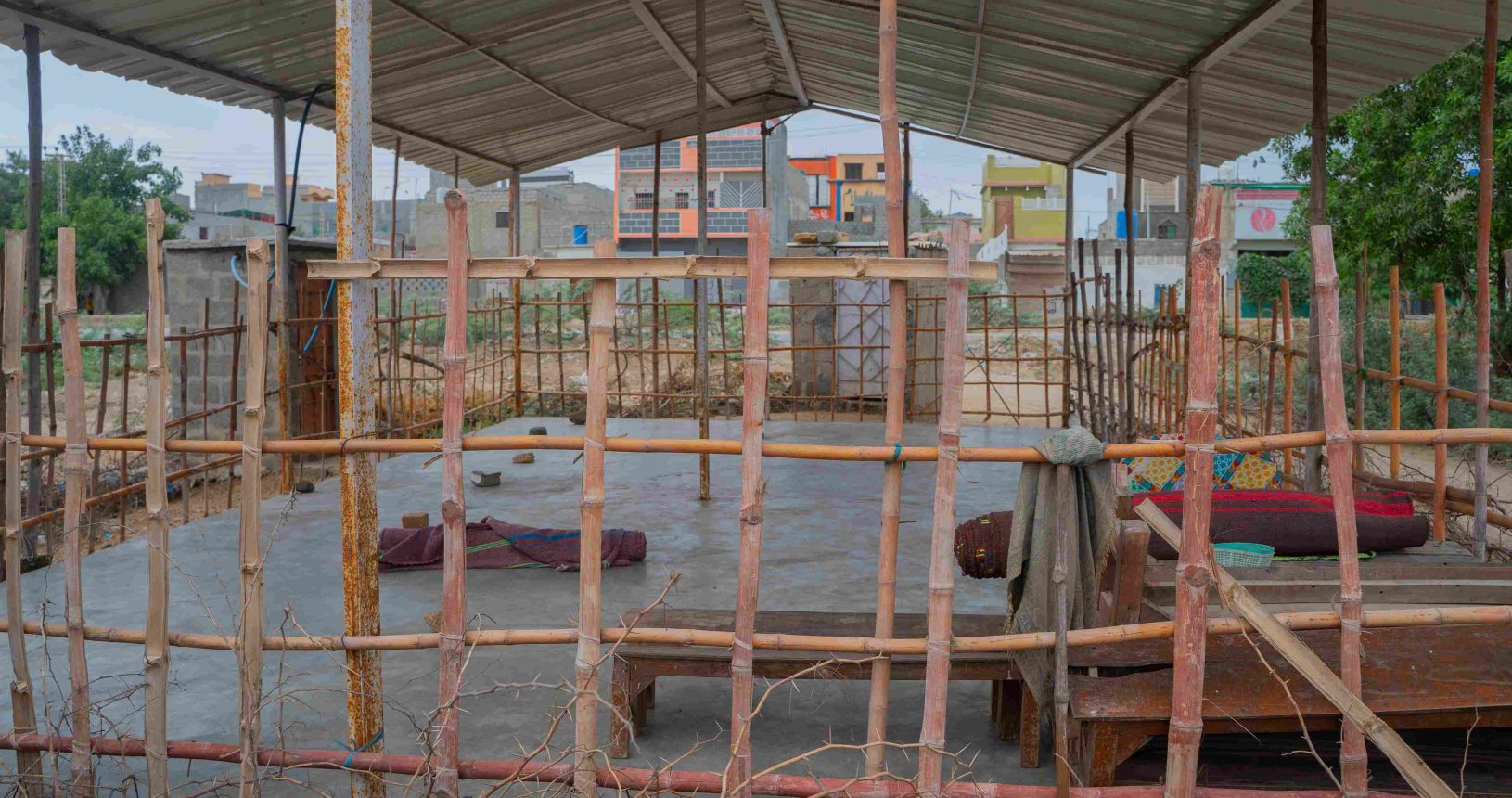 Another mosque is in construction, just a few steps away from the existing one. The residents pointed out that it belonged to another sect.
Another mosque is in construction, just a few steps away from the existing one. The residents pointed out that it belonged to another sect.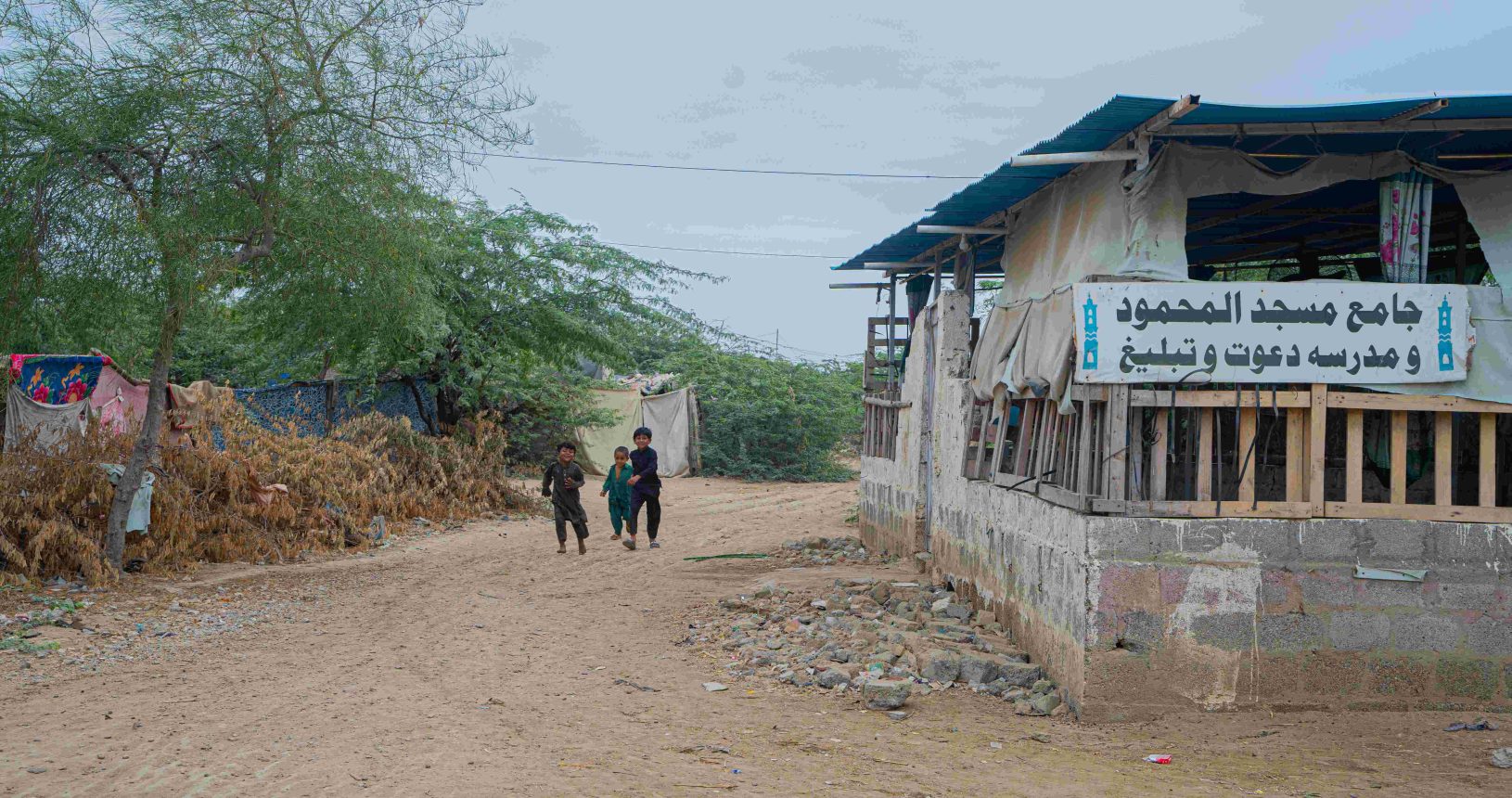 The only concrete structure found in 500 Quarters was a mosque, which also served as a madrasa.
The only concrete structure found in 500 Quarters was a mosque, which also served as a madrasa.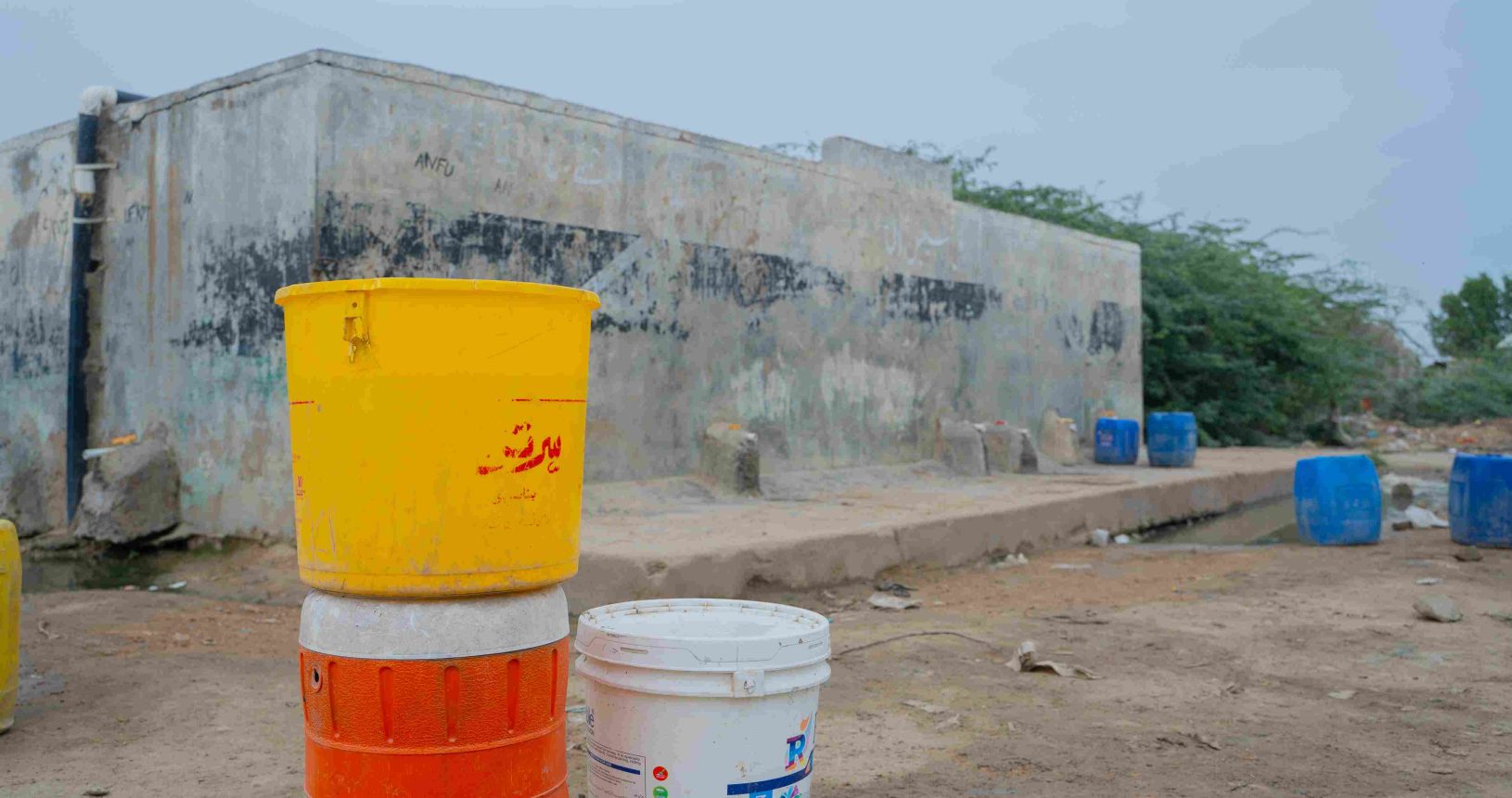 According to the residents of 500 Quarters, every household hardly manages to get 2 Jerry cans every day, while every household has 7 to 8 people on average.
According to the residents of 500 Quarters, every household hardly manages to get 2 Jerry cans every day, while every household has 7 to 8 people on average.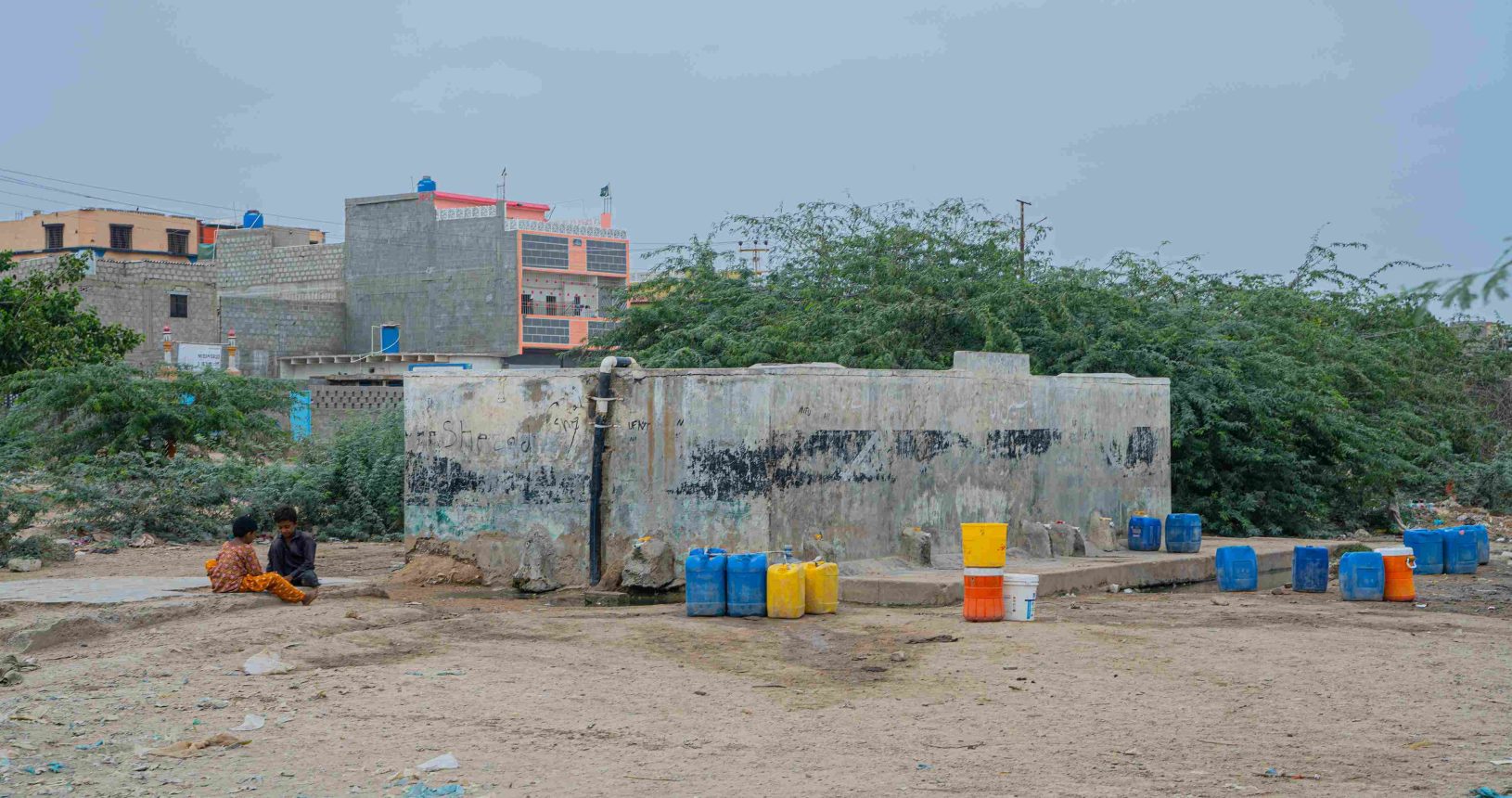 This is the only water tank providing sweet water for cooking and bathing to 800 families living in 500 Quarters, Musharraf Colony, Hawkesbay. The water comes for 30 minutes only for all residents of this settlement
This is the only water tank providing sweet water for cooking and bathing to 800 families living in 500 Quarters, Musharraf Colony, Hawkesbay. The water comes for 30 minutes only for all residents of this settlement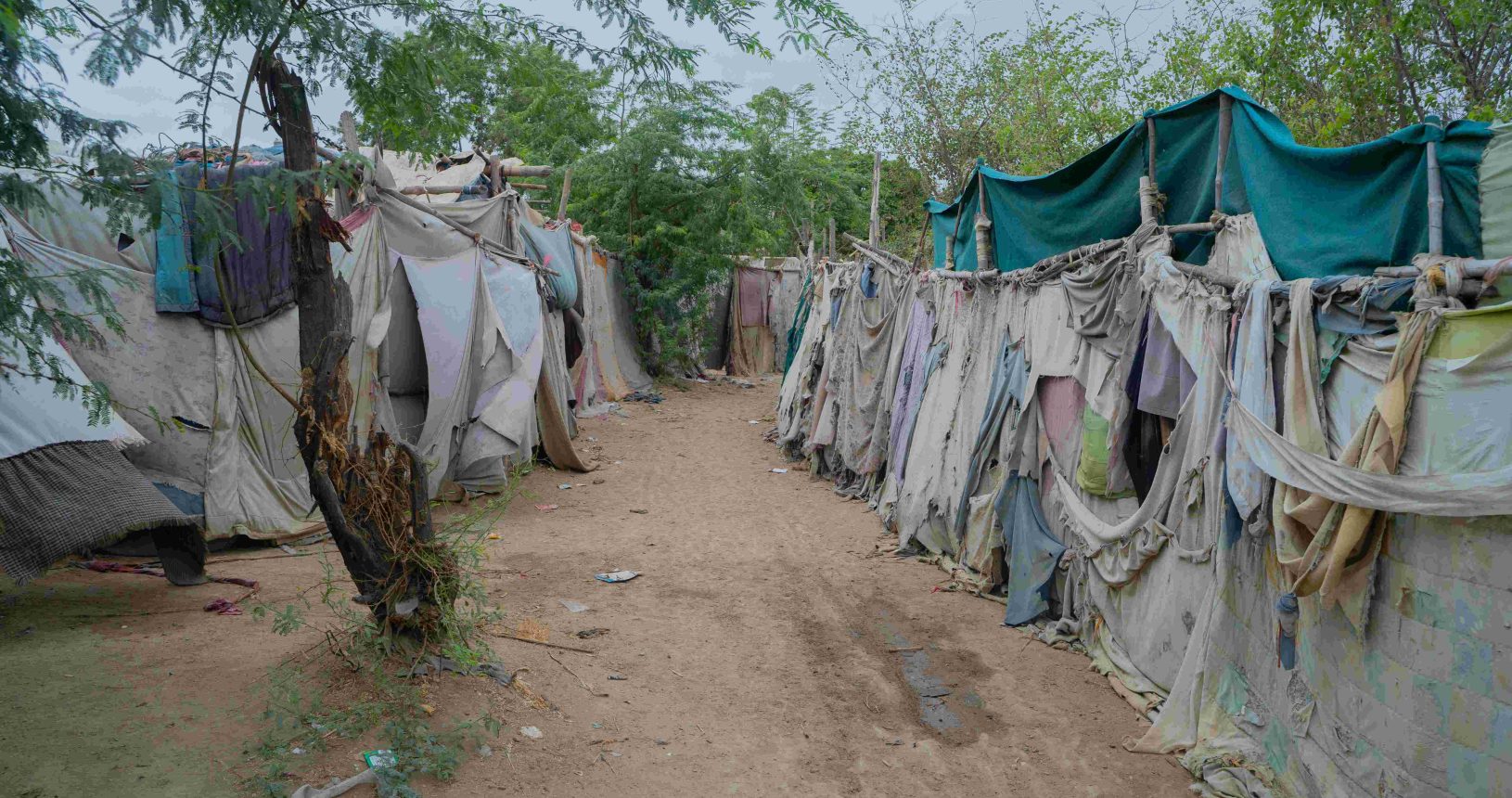 Narrow corridors were enacted to give space and privacy to each household, living in this makeshift settlement
Narrow corridors were enacted to give space and privacy to each household, living in this makeshift settlement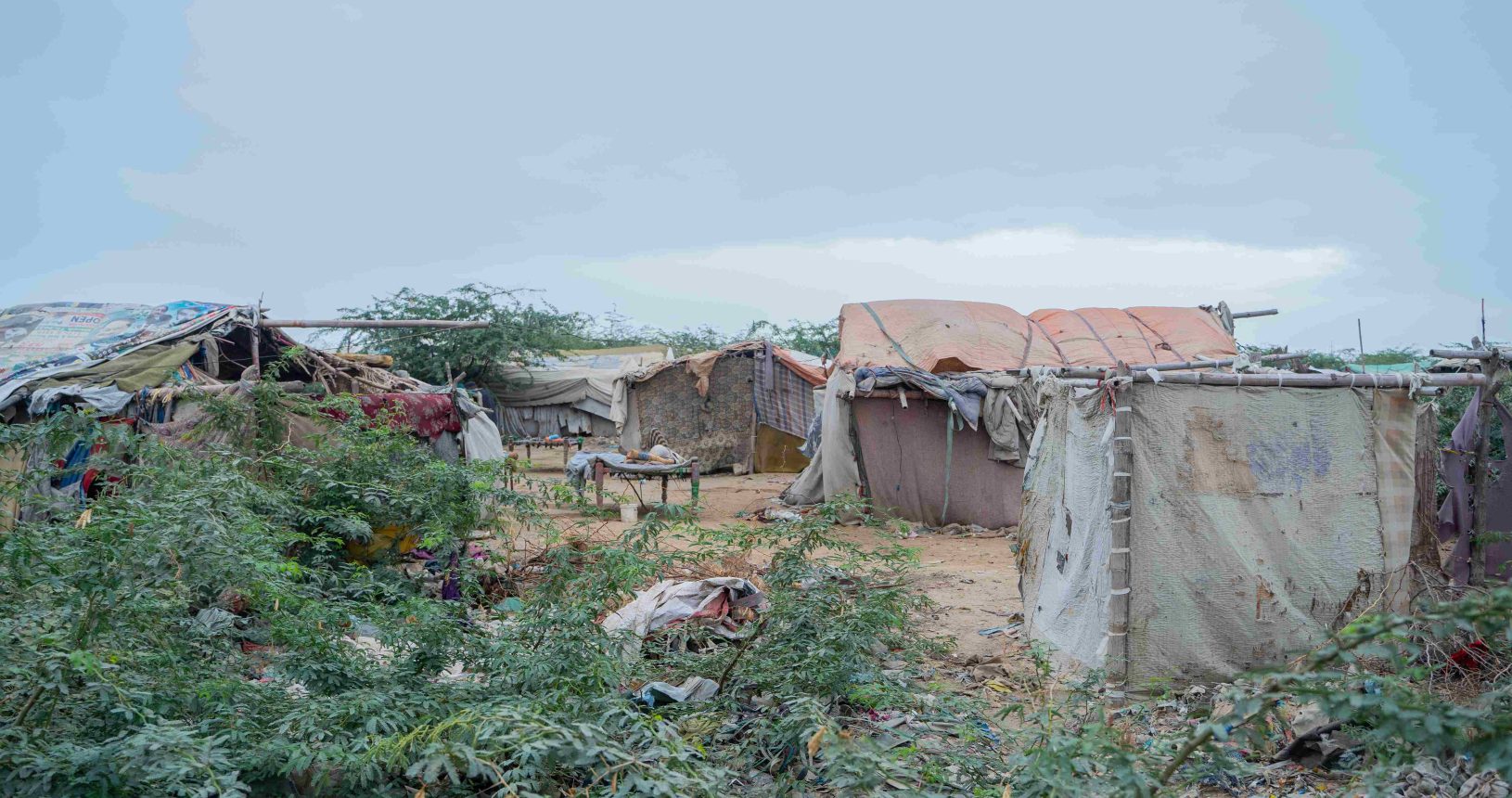 First look at this makeshift settlement known as Tent City, as well as 500 Quarters, situated near Musharraf Colony, Hawkesbay Road, Karachi.
First look at this makeshift settlement known as Tent City, as well as 500 Quarters, situated near Musharraf Colony, Hawkesbay Road, Karachi.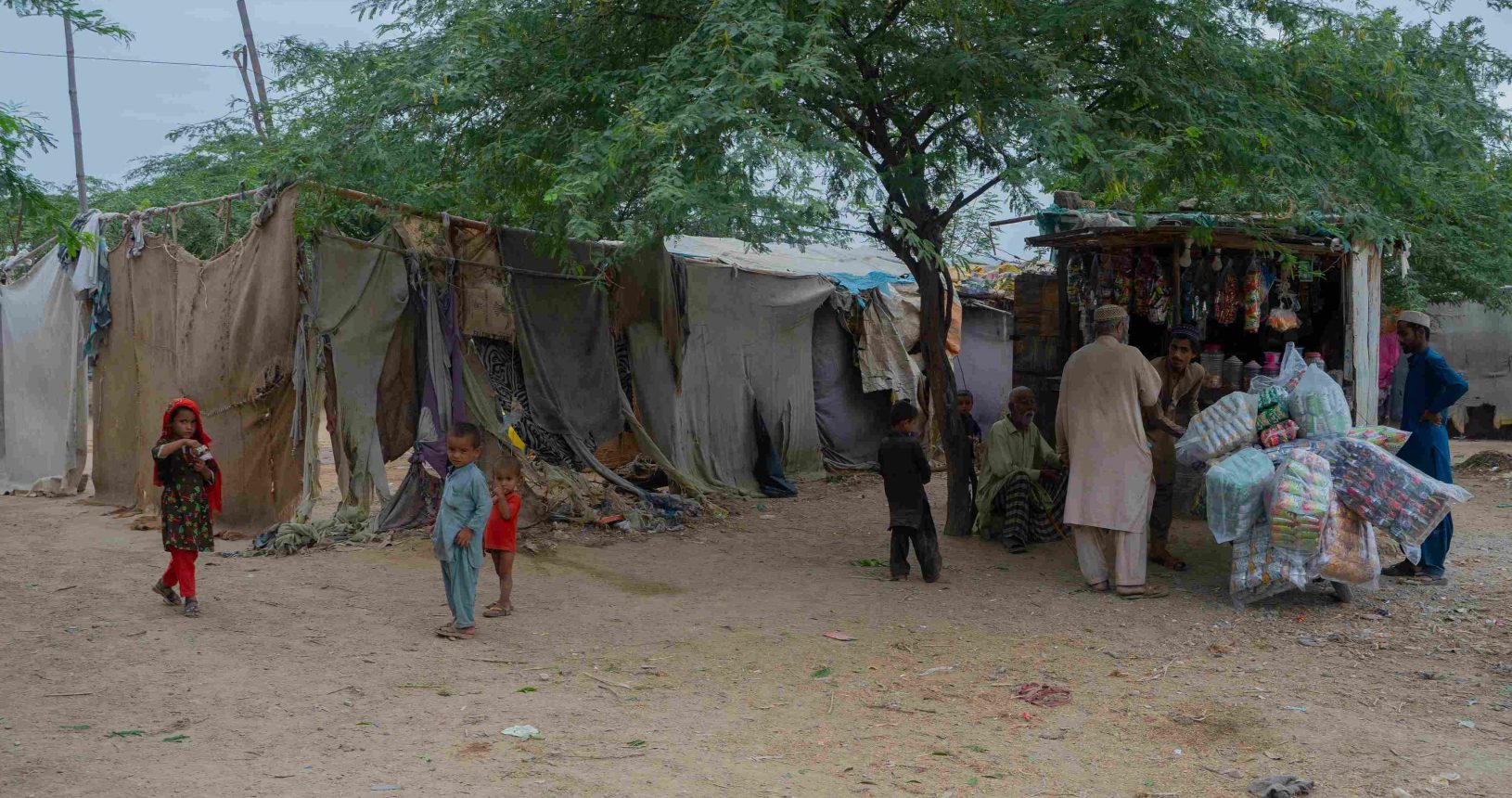 A small shop made of makeshift material at the entrance of Tent City aka 500 Quarters. New supplies just came and the shop owner is doing the procurement.
A small shop made of makeshift material at the entrance of Tent City aka 500 Quarters. New supplies just came and the shop owner is doing the procurement.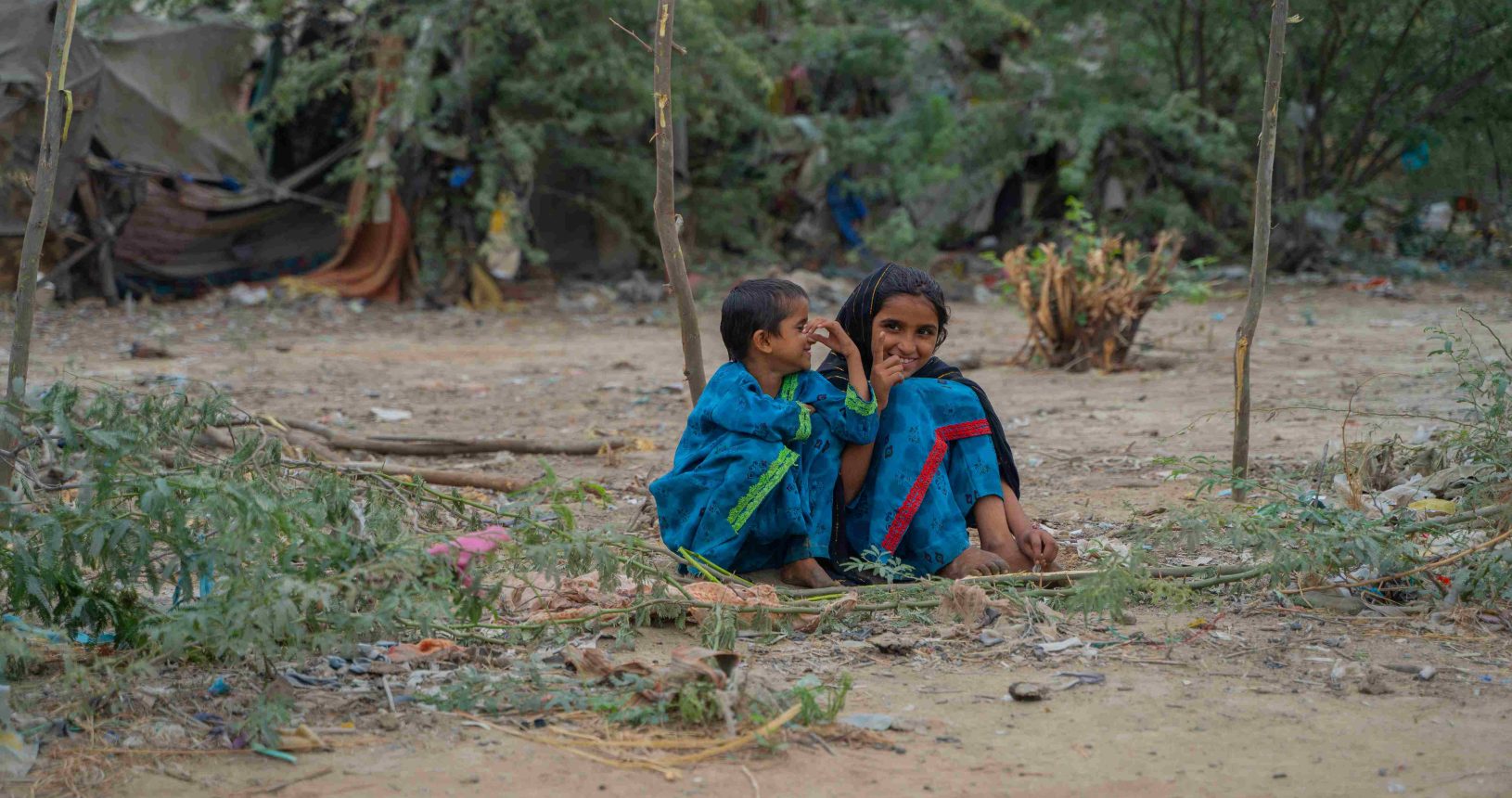 Two young sisters, wearing matching clothes and waiting for others to join for the playtime before the sun goes down completely.
Two young sisters, wearing matching clothes and waiting for others to join for the playtime before the sun goes down completely.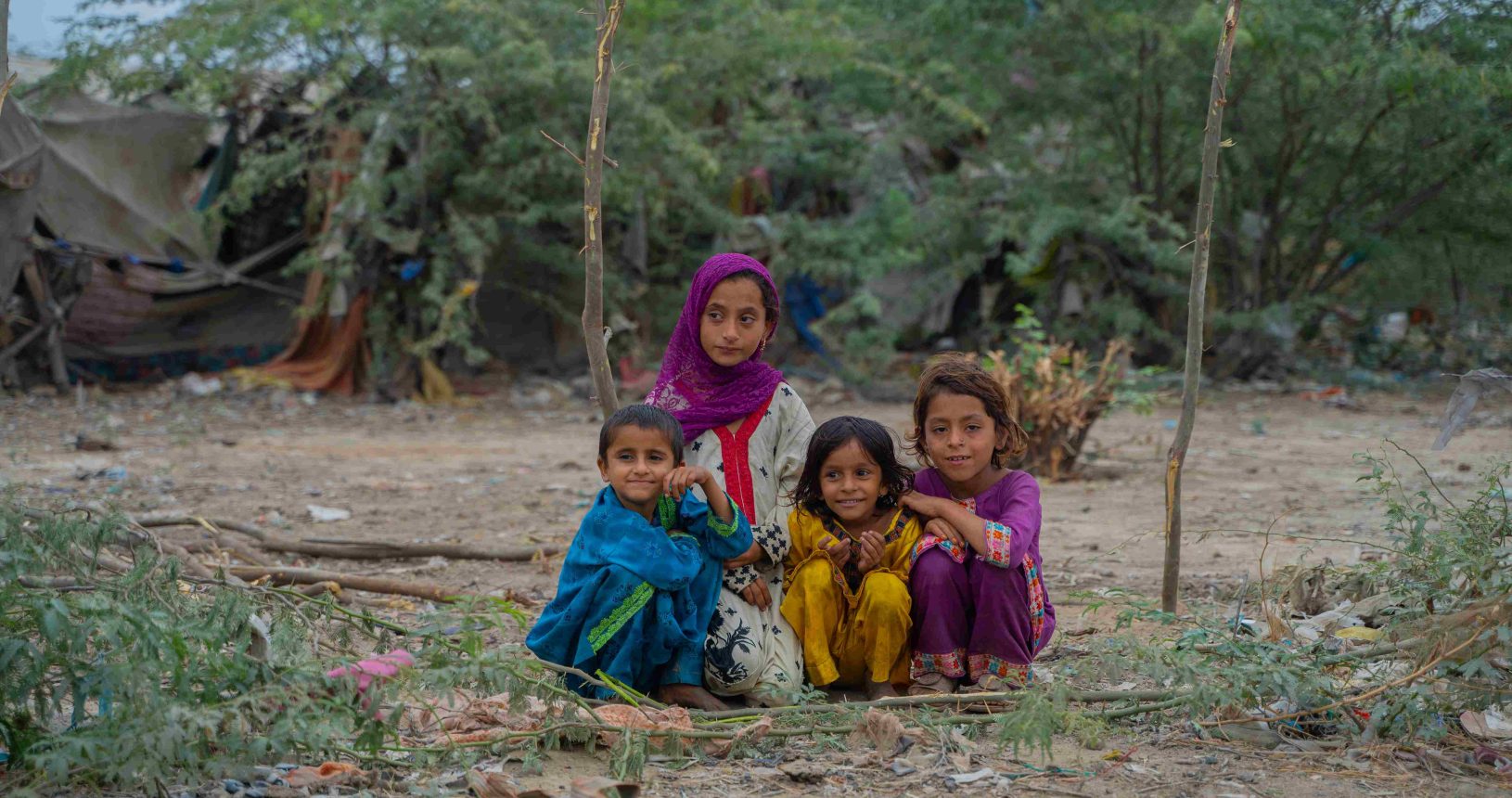 These children who were born here in this Tent City can hardly identify if they belong anywhere else, other than Karachi
These children who were born here in this Tent City can hardly identify if they belong anywhere else, other than Karachi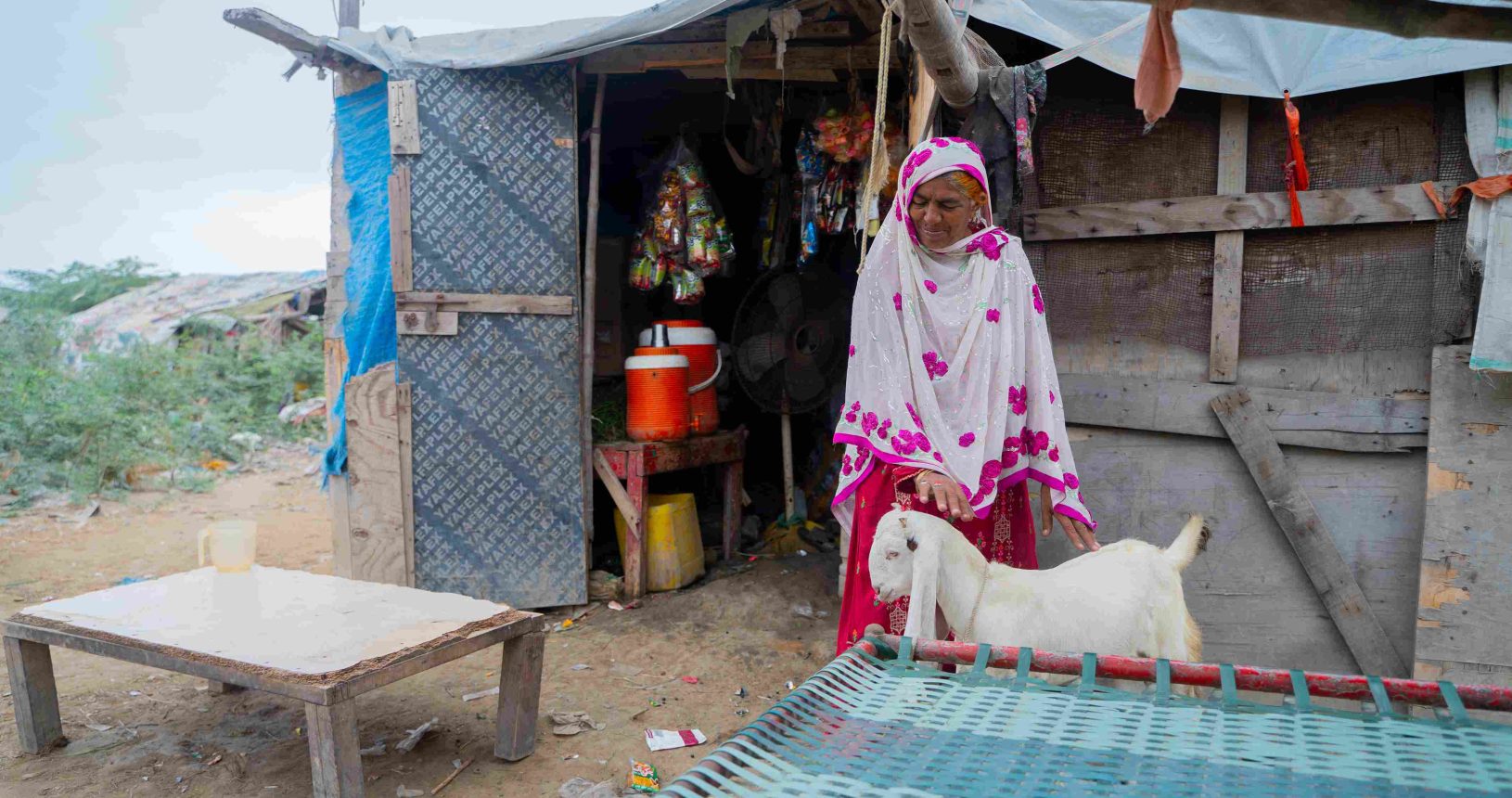 Hasnah runs a small shop in 500 Quarters, Musharraf Colony, Hawkesbay. She owns a goat too which fulfils her and her family’s dairy needs.
Hasnah runs a small shop in 500 Quarters, Musharraf Colony, Hawkesbay. She owns a goat too which fulfils her and her family’s dairy needs.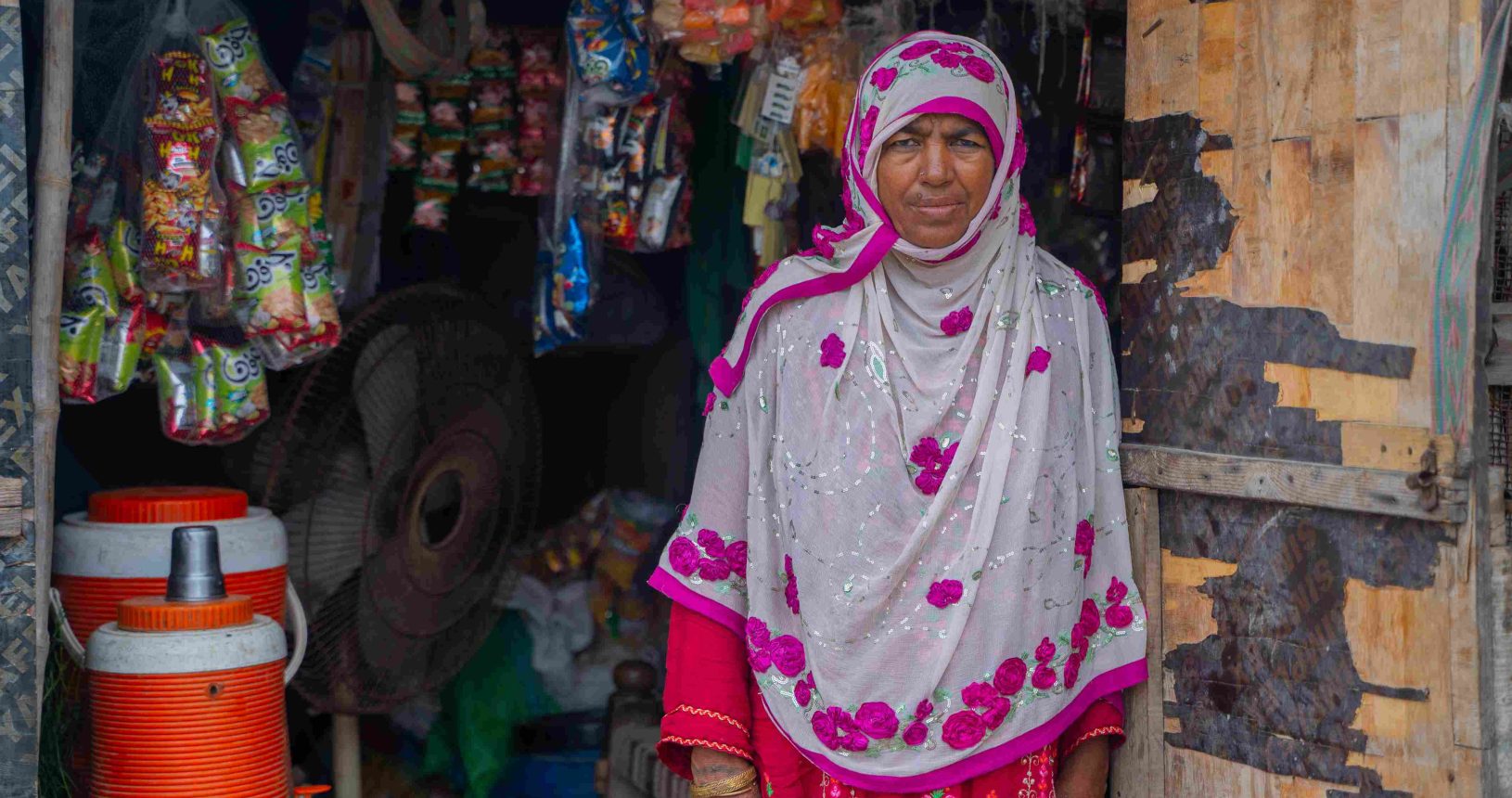 Husnah goes to the the wholesale market in the main city every week, to get supplies and retail merchandise for her shop. It takes her approximately 45-50 minutes to get there.
Husnah goes to the the wholesale market in the main city every week, to get supplies and retail merchandise for her shop. It takes her approximately 45-50 minutes to get there.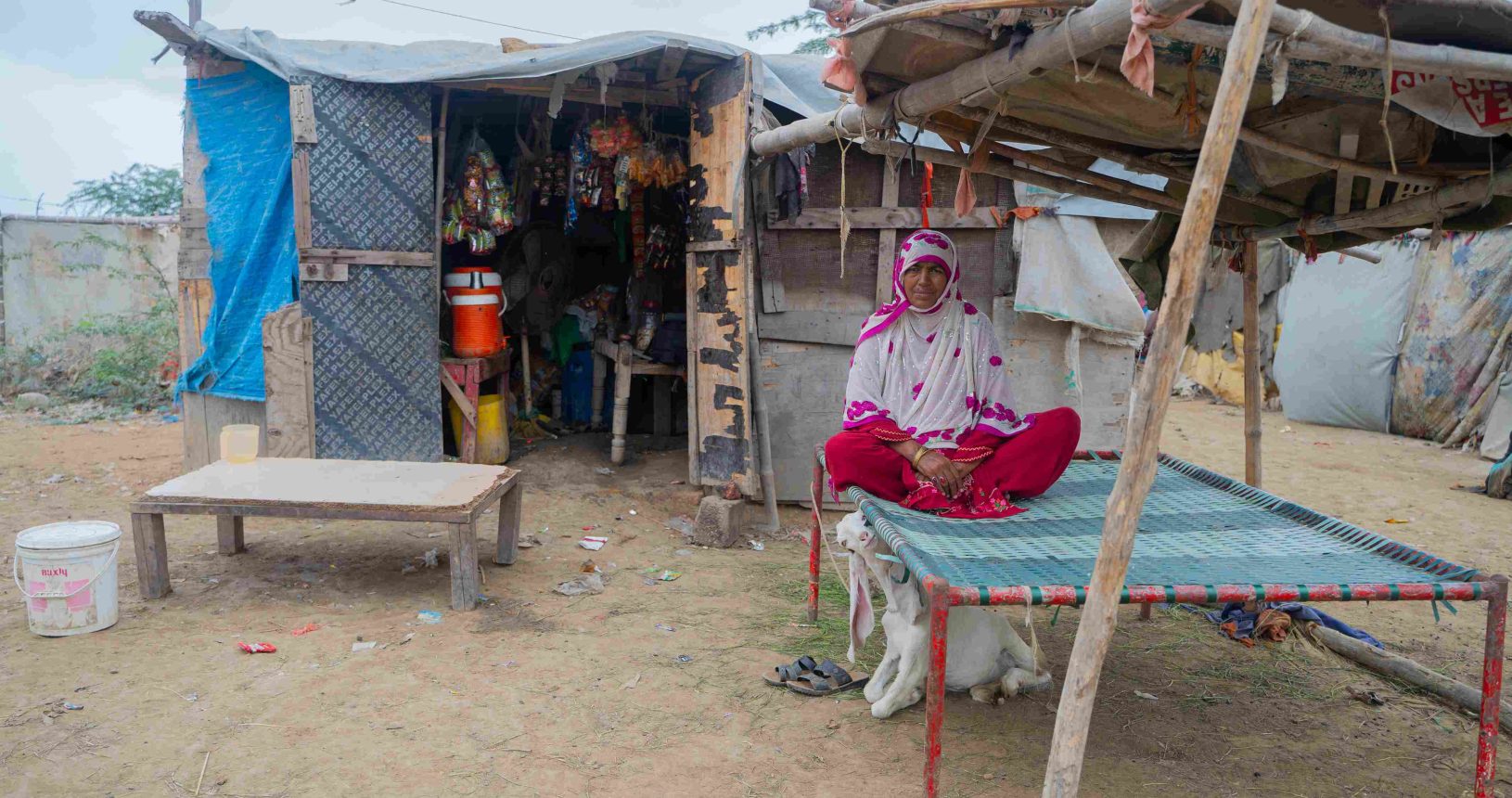 Husnah’s shop is the only woman-led business in 500 Quarters, which is accessible and caters to approximately 80-100 households, allowing women to step out of their home and chill with her under the shed.
Husnah’s shop is the only woman-led business in 500 Quarters, which is accessible and caters to approximately 80-100 households, allowing women to step out of their home and chill with her under the shed.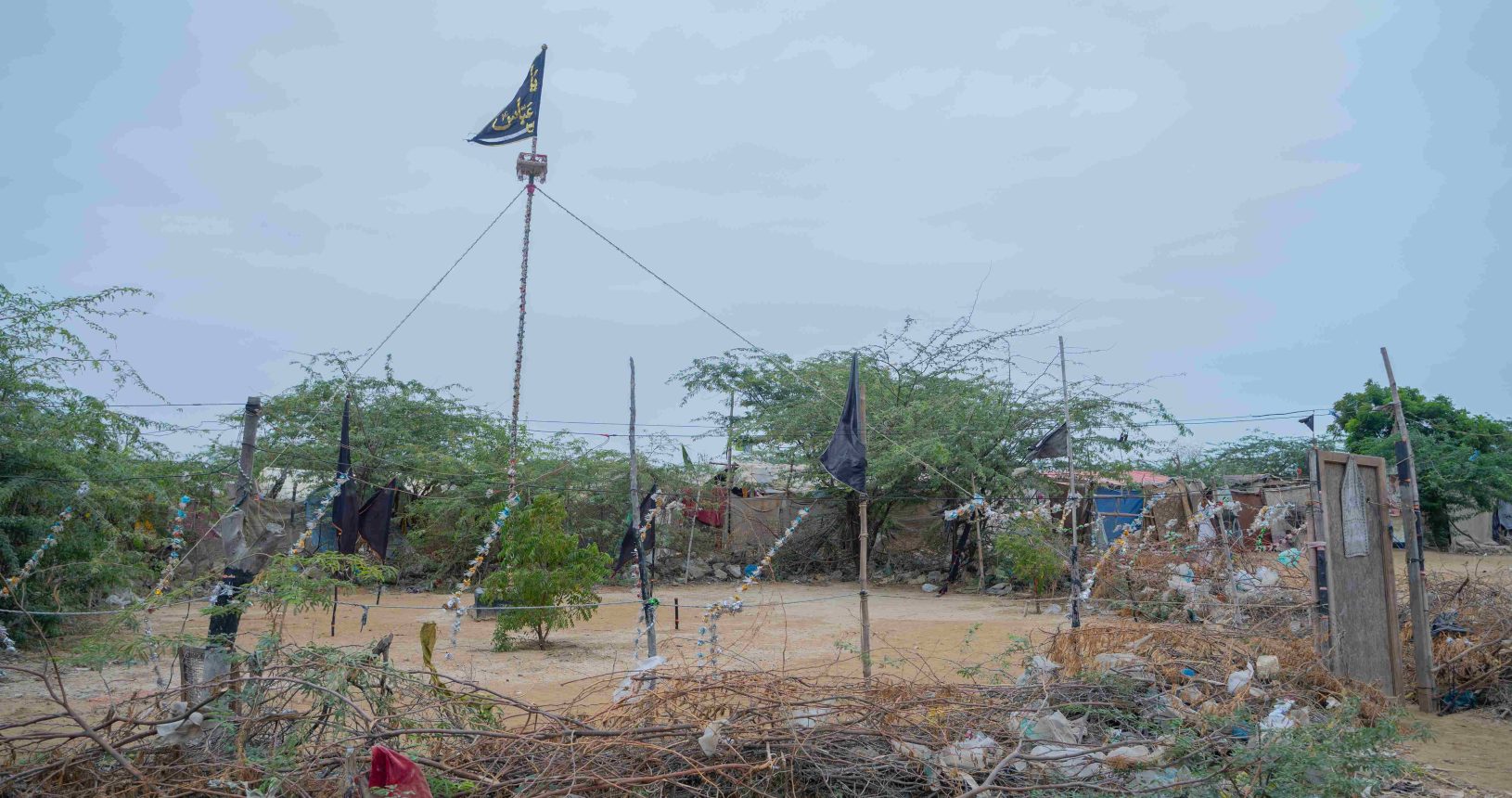 The place for the ritual of flagellation during the month of Moharram was established by locals. It is a reflection of how people from different faiths, coexist.
The place for the ritual of flagellation during the month of Moharram was established by locals. It is a reflection of how people from different faiths, coexist.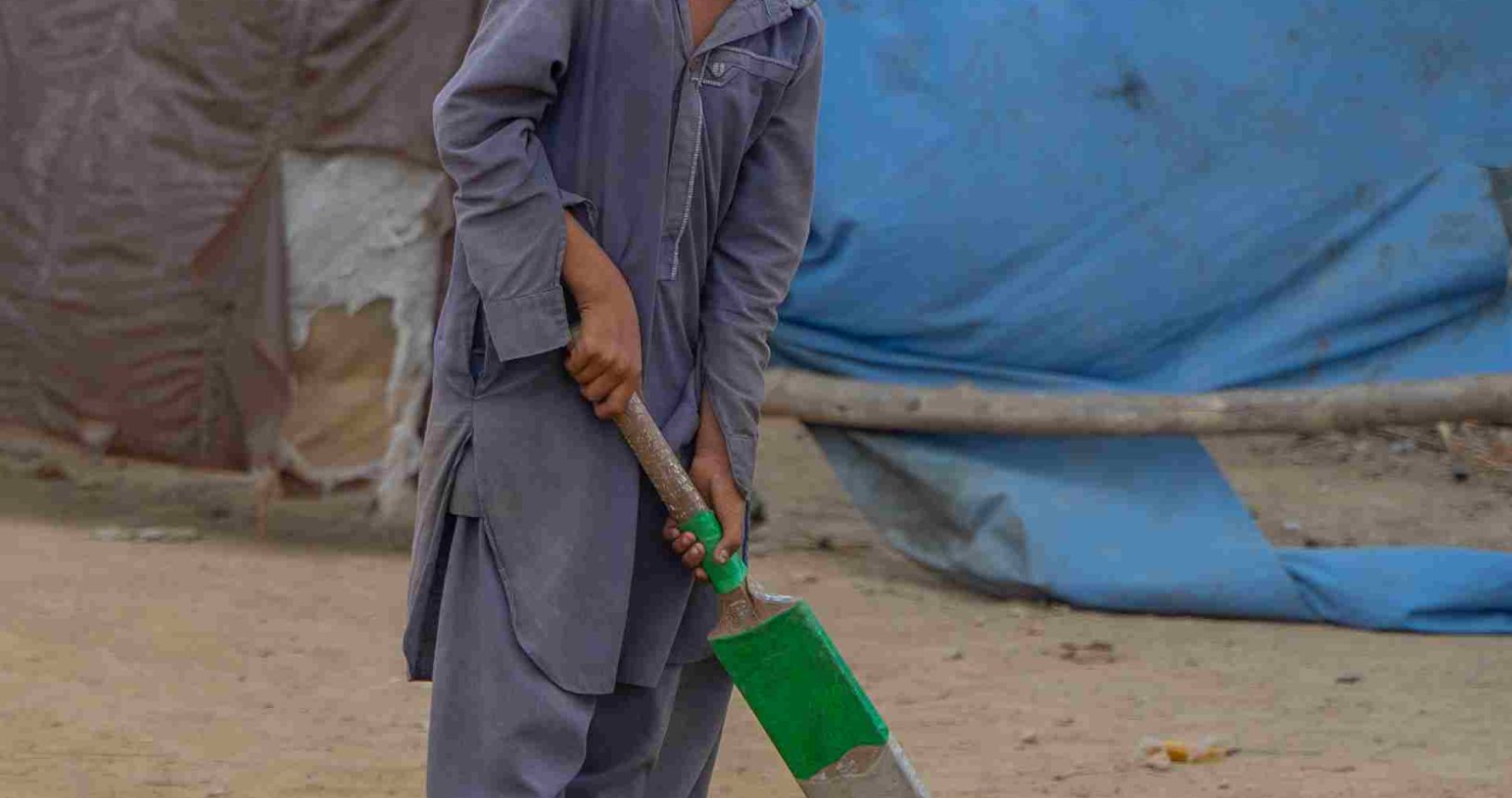 A child ready to hit the ball during a community match.
A child ready to hit the ball during a community match.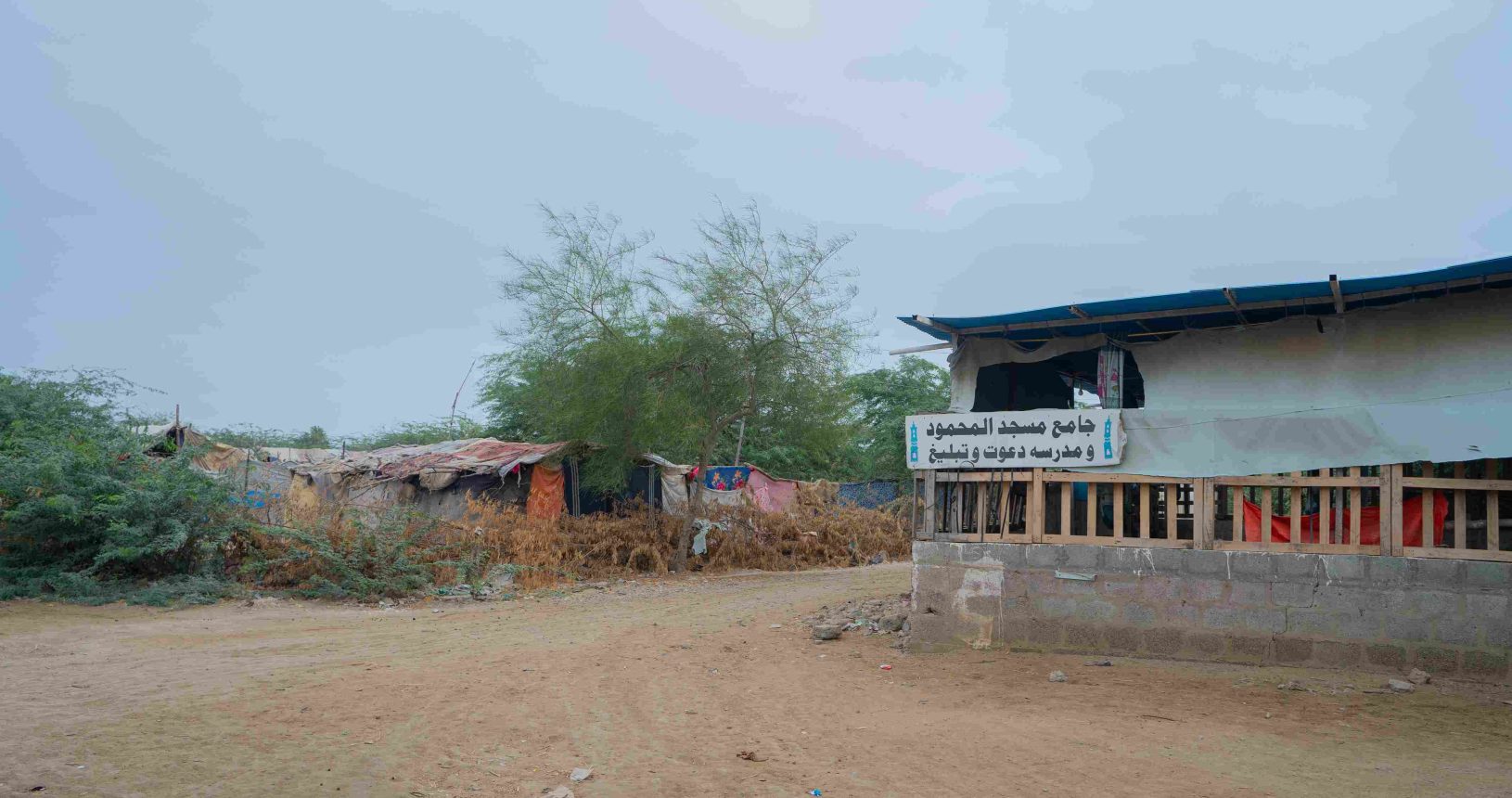 Children show their books in their multi-grade tent school. A teacher who lives in a nearby affluent neighbourhood volunteers her time in the community. On days when she does not visit, children still gather here and help each other in doing homework and studying. The government hasn’t provided any education facility to the neighbourhood in more than a decade.
Children show their books in their multi-grade tent school. A teacher who lives in a nearby affluent neighbourhood volunteers her time in the community. On days when she does not visit, children still gather here and help each other in doing homework and studying. The government hasn’t provided any education facility to the neighbourhood in more than a decade. Barkat Ali Jamali is a community leader here in 500 Quarters. He advocated for the housing rights of people living in this makeshift settlement of Tent City, 500 Quarters for almost 13 years.
Barkat Ali Jamali is a community leader here in 500 Quarters. He advocated for the housing rights of people living in this makeshift settlement of Tent City, 500 Quarters for almost 13 years.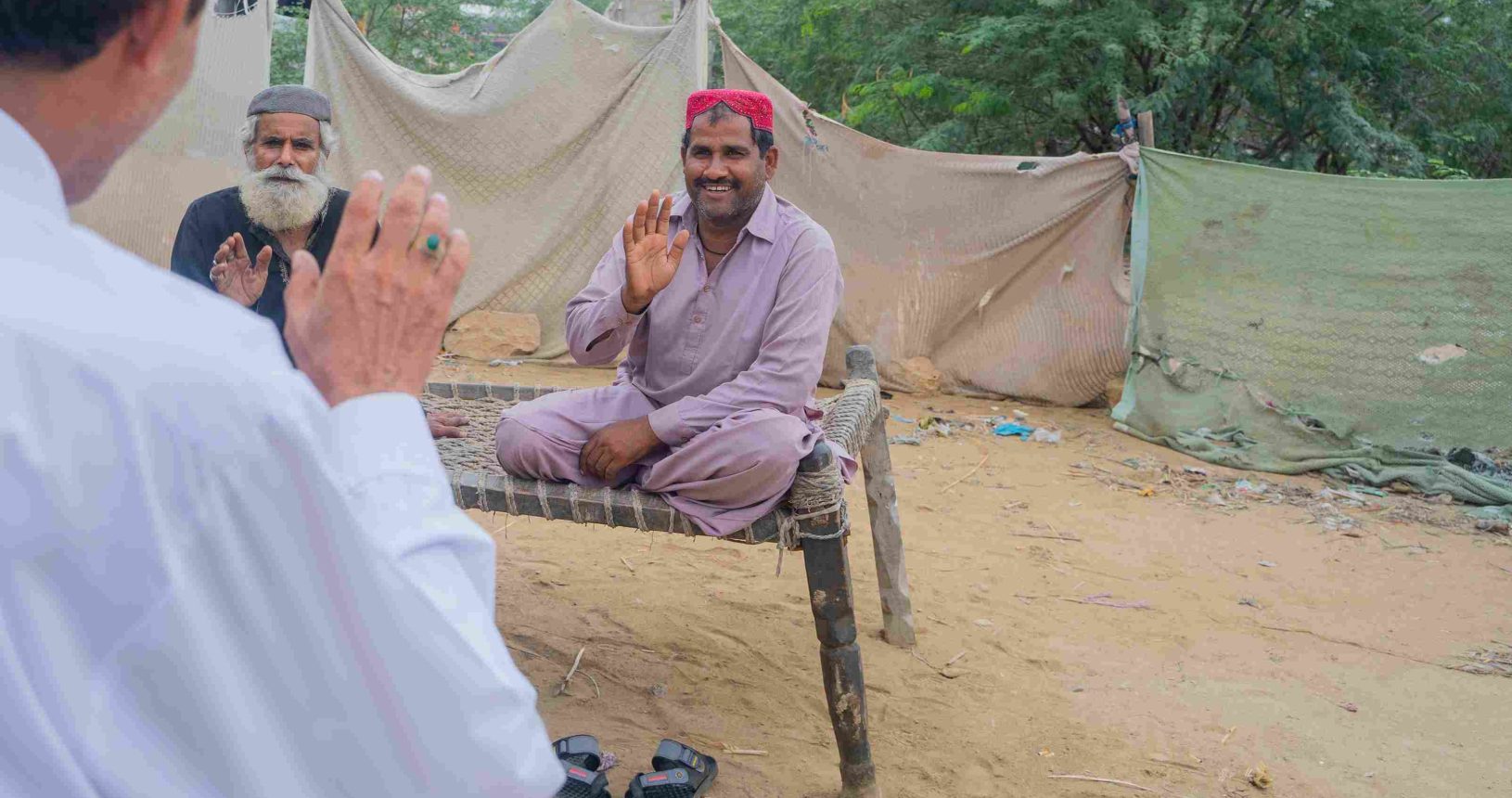 Barkat Ali shared that none of the people living in 500 Quarters want to go back to their native lands as they fear bonded labour and inhumane living conditions back there. He says, that inflation is the only challenge they have, which they all (community members) can face if they remain free and away from the feudal system back in their village.
Barkat Ali shared that none of the people living in 500 Quarters want to go back to their native lands as they fear bonded labour and inhumane living conditions back there. He says, that inflation is the only challenge they have, which they all (community members) can face if they remain free and away from the feudal system back in their village.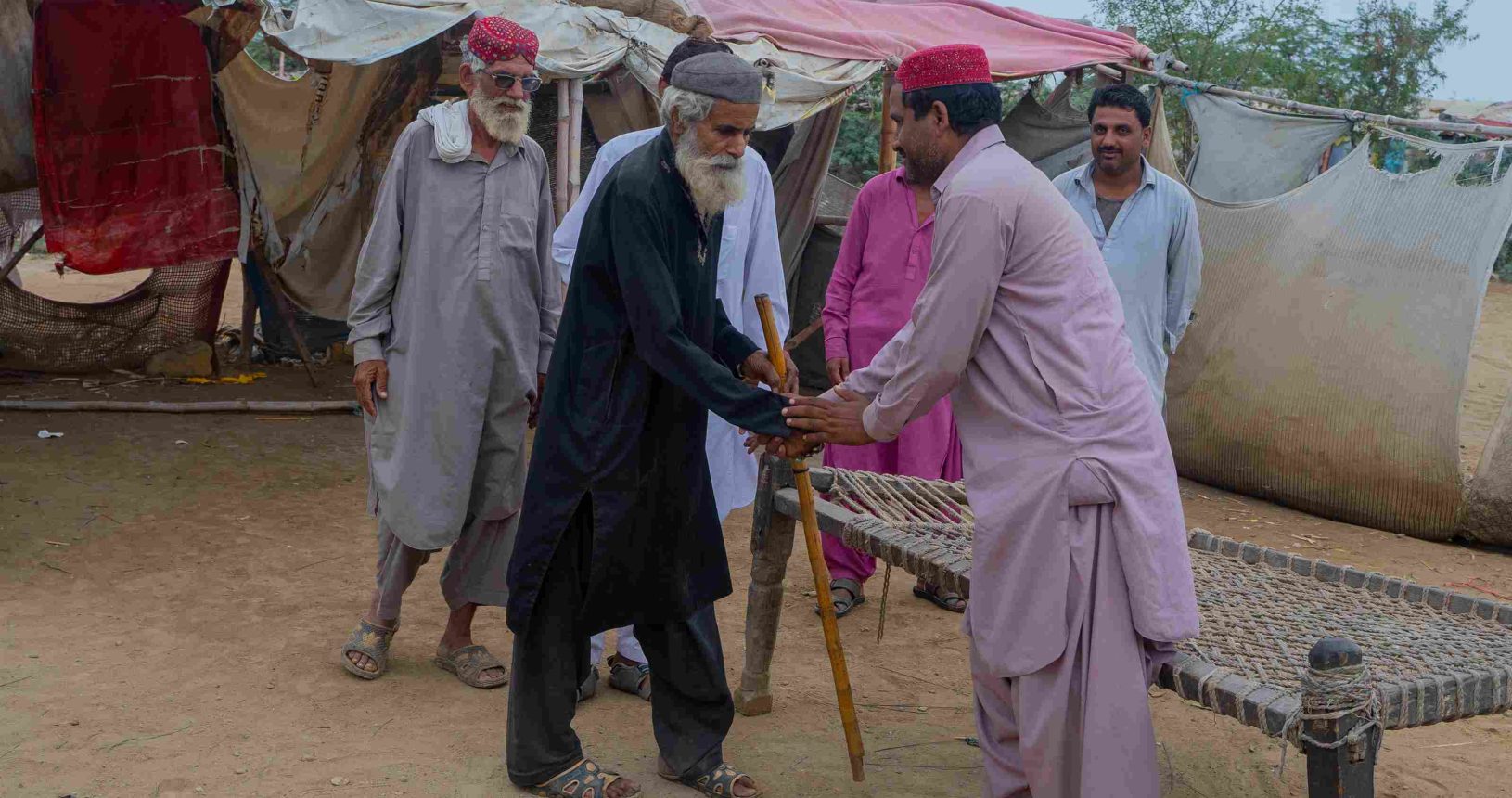 Representatives of all the tribes living in 500 Quarters are gathering to discuss the pressing issues of the settlement and to find solutions for them. This committee of the tribe representatives decide and resolves every small or big issue, any settler family is facing in any way. All of them use their contacts to ensure a free life for all.
Representatives of all the tribes living in 500 Quarters are gathering to discuss the pressing issues of the settlement and to find solutions for them. This committee of the tribe representatives decide and resolves every small or big issue, any settler family is facing in any way. All of them use their contacts to ensure a free life for all.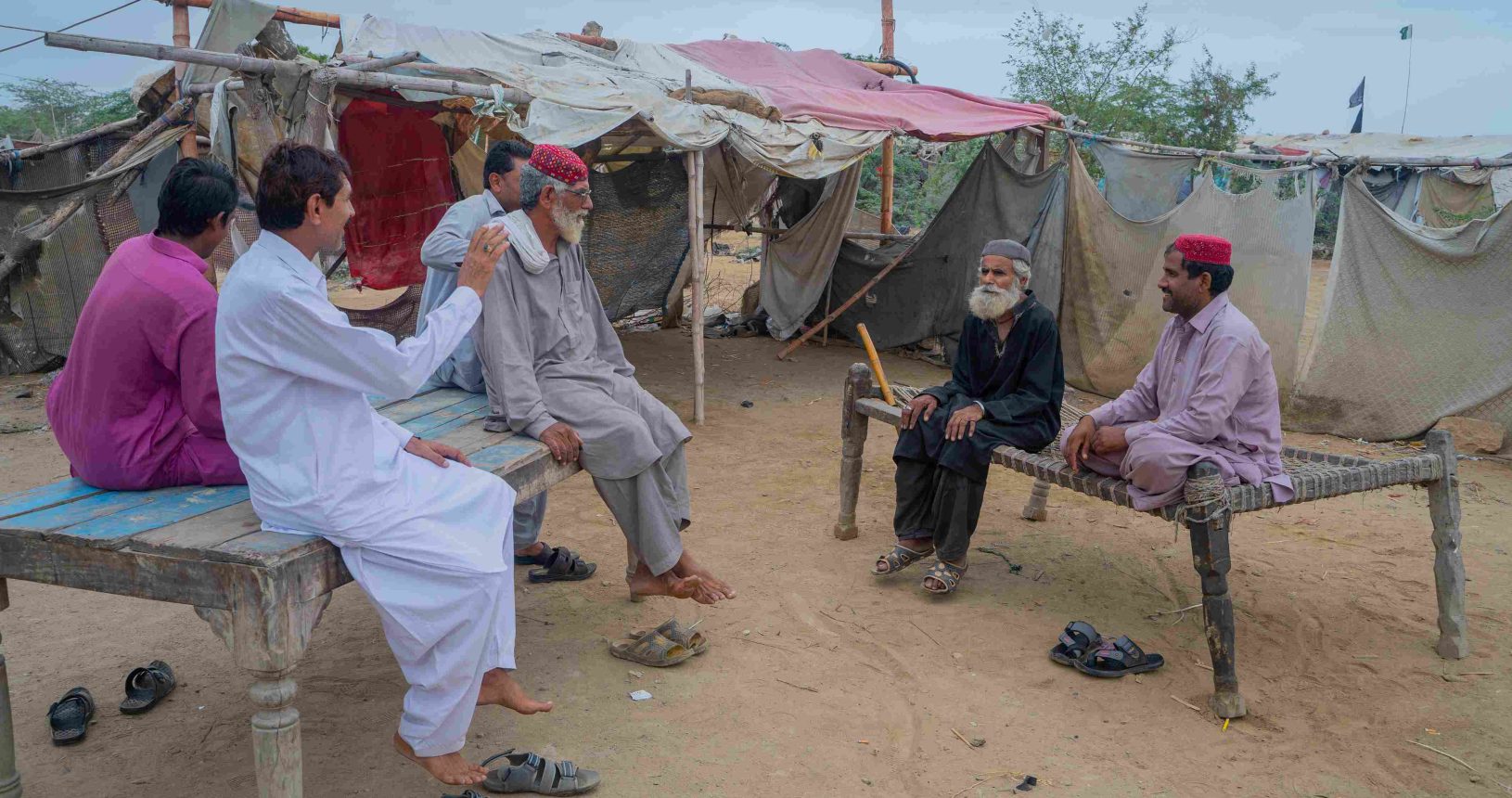 Barkat Ali contested in the local body elections, in his attempt to showcase the politics and agency of the settlers of 500 Quarters.
Barkat Ali contested in the local body elections, in his attempt to showcase the politics and agency of the settlers of 500 Quarters.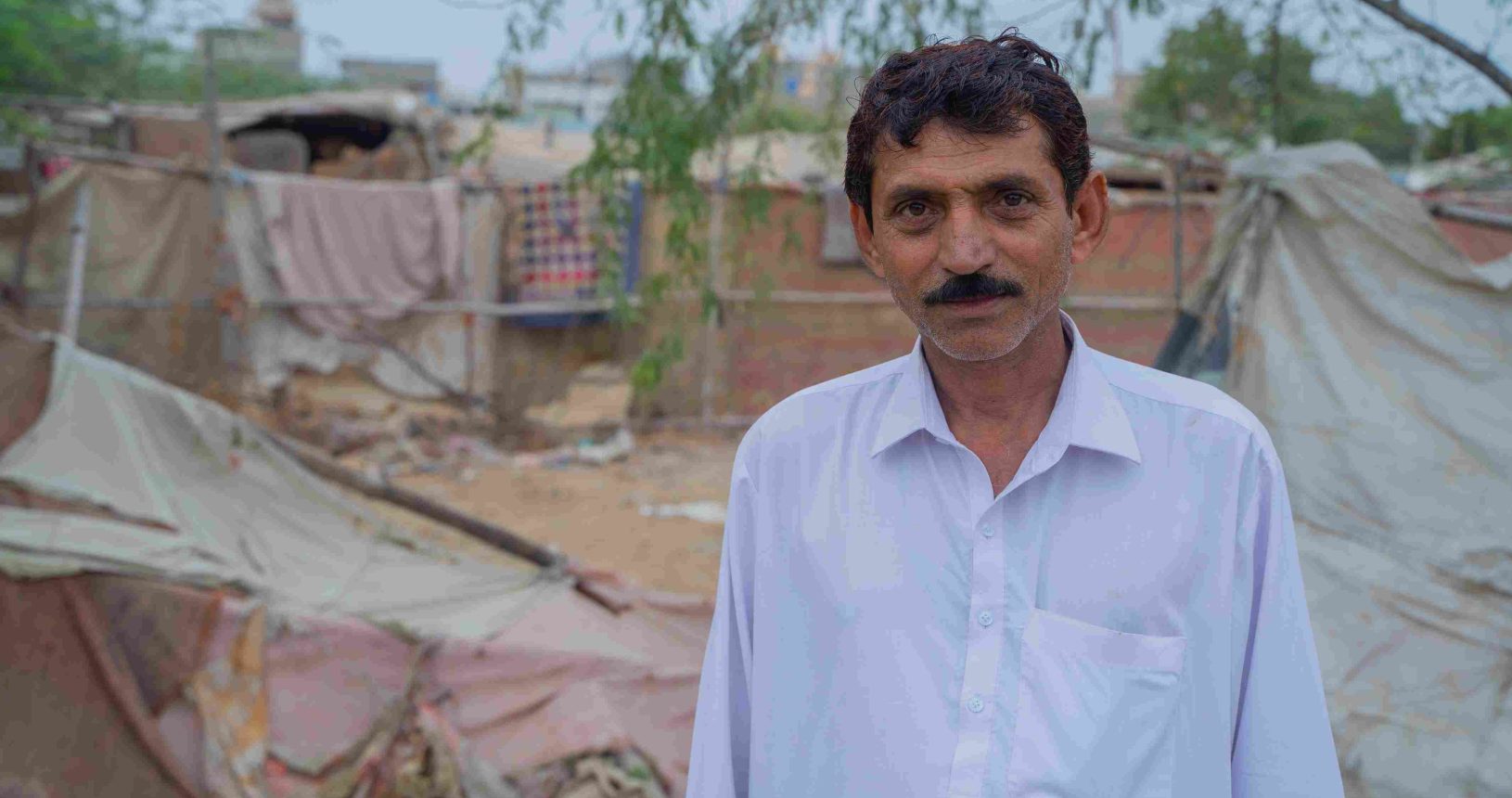 Zulfiqar Ali was a humble farmer who came to 500 Quarters, Karachi on a train arranged by the Government of Pakistan for people affected by the Super Floods of 2010. This was the first time he saw the city and he got overwhelmed by seeing so many people in one area.
Zulfiqar Ali was a humble farmer who came to 500 Quarters, Karachi on a train arranged by the Government of Pakistan for people affected by the Super Floods of 2010. This was the first time he saw the city and he got overwhelmed by seeing so many people in one area.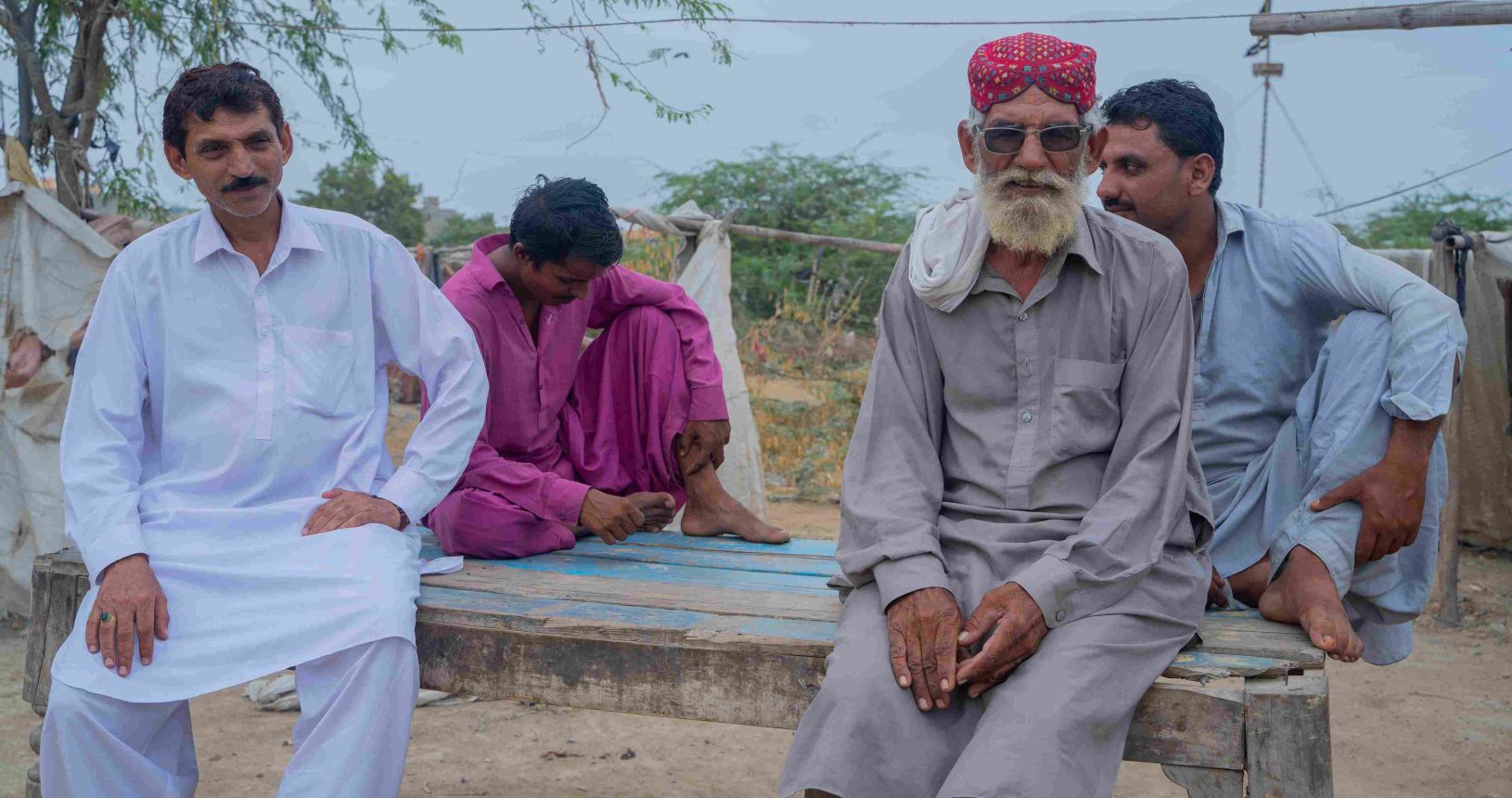 Zulfiqar Ali works in a nearby godown on daily wages and contested local body elections for Ward. He is respected in the community for his polite and solution-oriented approach
Zulfiqar Ali works in a nearby godown on daily wages and contested local body elections for Ward. He is respected in the community for his polite and solution-oriented approach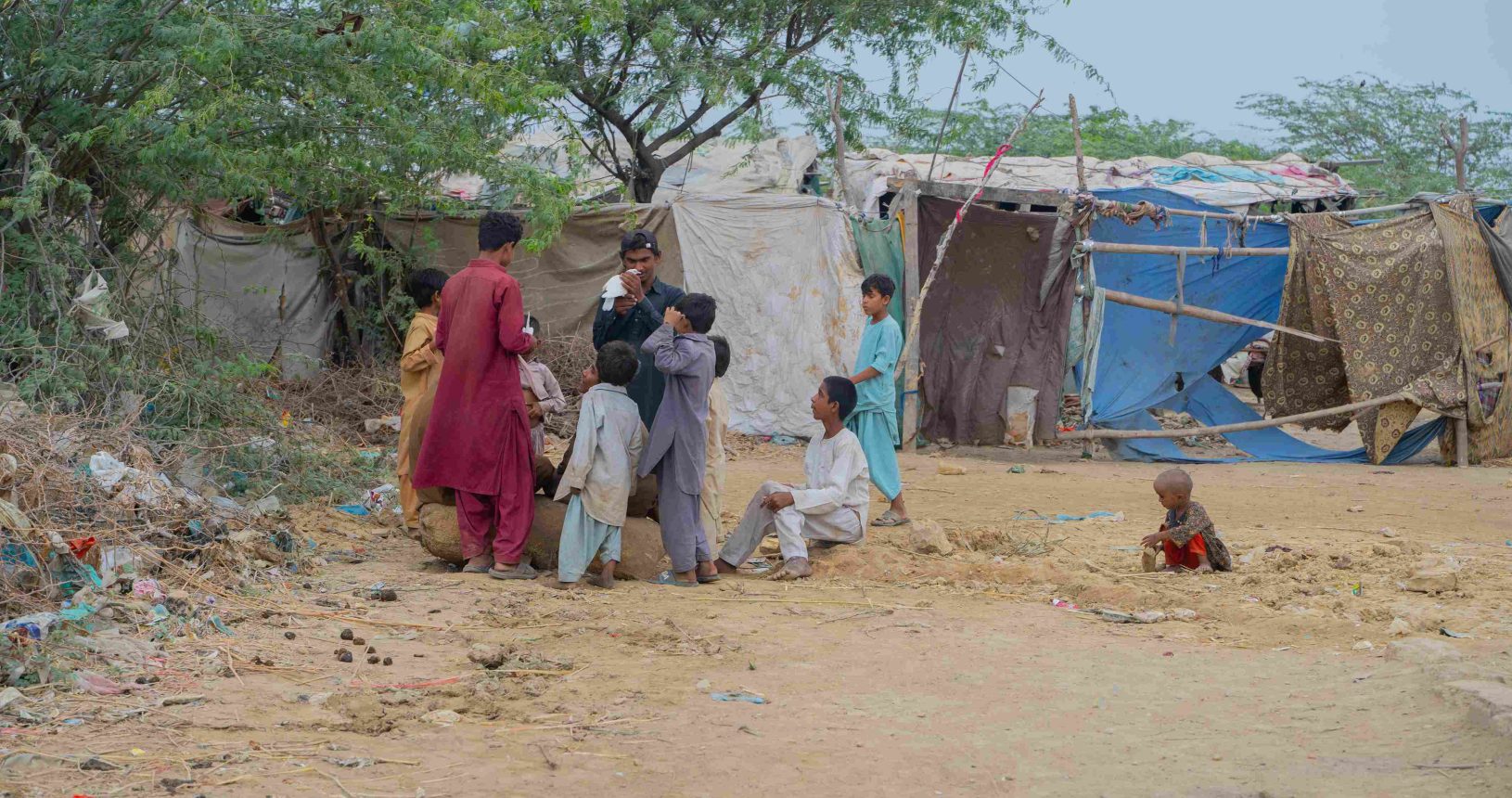 Children gathered at the entrance of 500 Quarters, waiting for others to join in so that their play time begins
Children gathered at the entrance of 500 Quarters, waiting for others to join in so that their play time begins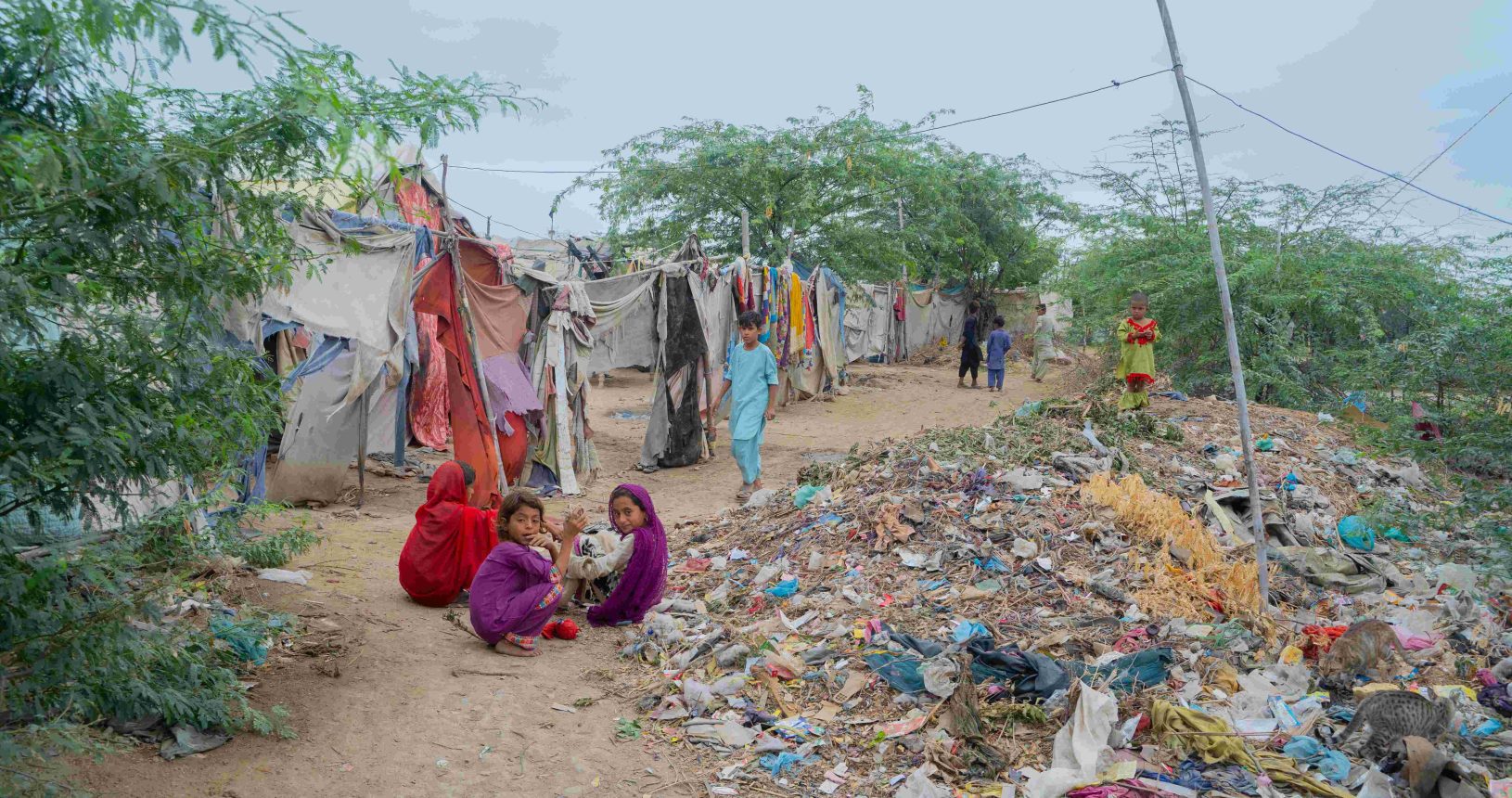 The waste disposal site of 500 Quarters is located inside the vicinity. The residents burn it to end mosquitoes, believing that mosquitoes don’t come from the smell of burning trash.
The waste disposal site of 500 Quarters is located inside the vicinity. The residents burn it to end mosquitoes, believing that mosquitoes don’t come from the smell of burning trash.
500 Quarters, located in Hawkesbay, Block 5, Sector 5, Mauripur Town Municipal Corporation of District Keamari, Karachi, Pakistan, stands as a reflection of resilience amid adversity. Established by the Sindh Government, this settlement was originally created as a response to the 2010 Super Floods in Sindh. While often referred to as Tent City, Hawkesbay, in newspaper reports, its unique identification is crucial, particularly as numerous new Tent Cities have emerged on the outskirts of Karachi since the 2022 floods.
Initially comprising 500 tents, 500 Quarters provided temporary shelter to communities severely affected by the 2010 floods. Today, it is characterized by jhuggi-jhonpri (makeshift tent) structures constructed from locally available materials, including straw, bamboo, keekar wood, panaflex printing material, and repurposed clothing items. The settlement's predominantly farming population has transitioned into daily wage earners in nearby factories, a shift that has offered them a measure of relief from previous socio-economic hardships.
The residents of 500 Quarters hail from rural Sindh, specifically Jacobabad, Dadu, Shahdadkot, and Qambar, areas significantly impacted by the floods. Initially established with government and non-governmental organization (NGO) support, 500 Quarters aimed to provide temporary shelter, food, and water to the displaced individuals. As floodwaters receded, the government expected these communities to return to their villages, leading to the cessation of support for the settlement. However, the lack of secure land tenure exposes these displaced individuals to the risk of displacement by authorities.
500 Quarters' residents, now primarily engaged in daily wage labour, face various challenges related to infrastructure, education, healthcare, and land tenure. They earn an average monthly wage of 12,000 PKR (39 USD) while enjoying rent-free shelter, providing a semblance of stability in their lives. Despite the lack of a formal census, field visits and consultations with community leaders and members estimate the population to be around 10,000.
The settlement grapples with significant infrastructure challenges. Located approximately 20-24 km from the city centre, it sits on the outskirts of Karachi, leading to water scarcity concerns. Residents rely on water tanks within the settlement, with the responsibility often falling on children and women. Electricity connections are established through self-help initiatives but suffer from low voltages, limiting the usage of heavy appliances. Cooking primarily relies on wood as there is no state-provided gas connection. Healthcare services are limited, with residents either relying on private clinics or having to travel 17 kilometres to access government hospitals.
Access to education remains a pressing issue in 500 Quarters. While a tent school exists, only 20-25 children from over 800 households are enrolled, primarily due to poverty and the time-consuming task of water collection. Some children attend nearby schools, but their numbers remain limited. A small prayer area, including a mosque and madrasah, caters to the religious needs of the predominantly Muslim population. Furthermore, residents actively participate in electoral processes, having transferred their votes from their original districts in interior Sindh to 500 Quarters.
500 Quarters serves as a reminder of the challenges faced by climate-displaced individuals and their capacity to persevere. Despite the absence of secure land tenure, and limited access to infrastructure, education, and healthcare services, the community has established a sense of stability and collective identity.
